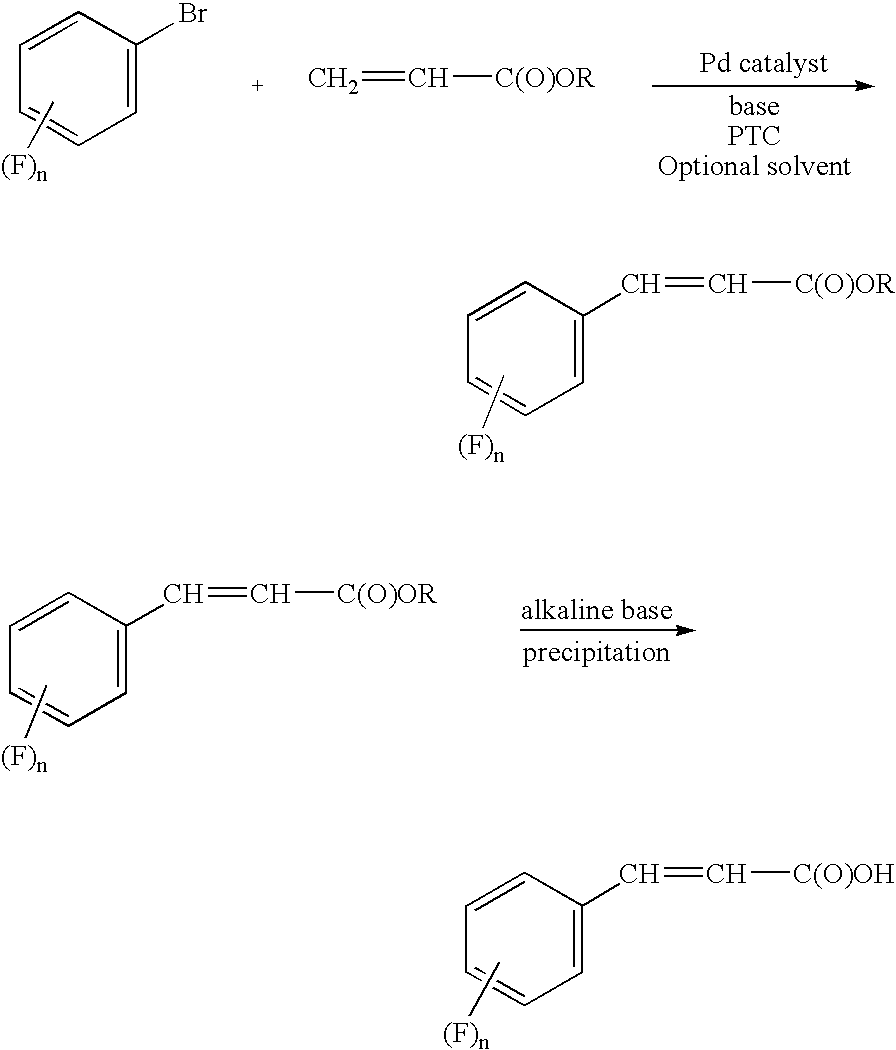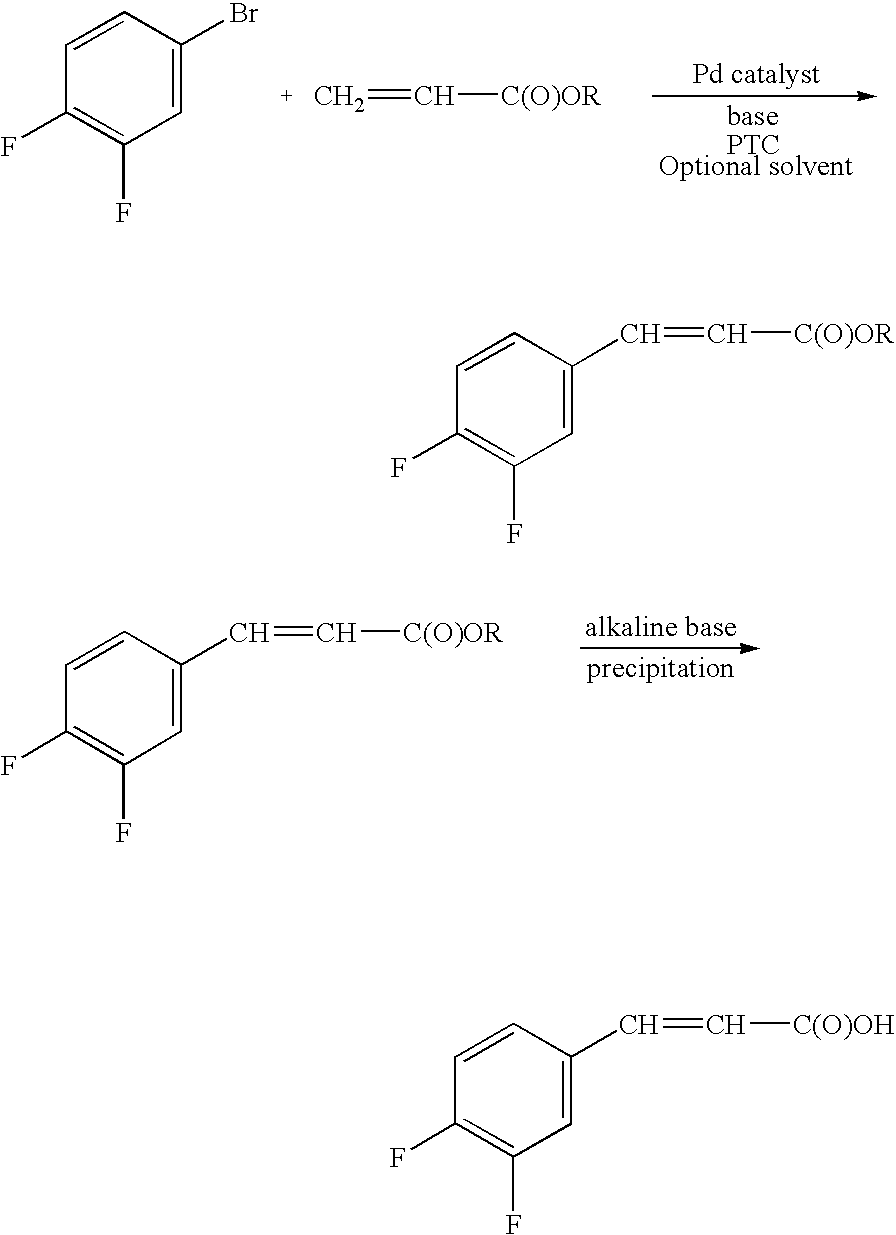Process for preparing cinnamic acids and alkyl esters thereof
- Summary
- Abstract
- Description
- Claims
- Application Information
AI Technical Summary
Problems solved by technology
Method used
Image
Examples
example 1
Production of Butyl 3,4-difluorocinnamate
[0018] A 1.0 L reactor, under N2 atmosphere, was charged with 200 ml N-methyl-2-pyrrolidinone (NMP), 6.7 g tetrabutylammonium bromide (TBAB), 25.2 g triethylamine (TEA), 27.9 g butyl acrylate and 0.0093 g palladium(II) acetate and the reactor contents were heated to a temperature in the range of from 120° C. to 130° C. Then, with stirring, 40.0 g 1-bromo-3,4-difluorobenzene was added to the reaction mixture over a period of 30 to 60 minutes via an addition funnel. Stirring was continued for about 2 hours while the reaction temperature was maintained at 140° C. The reaction was complete after 30 minutes, with a GC assay of 94.4 area %. The reaction mixture was then permitted to cool down while stirring was continued. After cooling 100 ml water was added and a slight exotherm was observed with the temperature rising from 22° C. to about 30° C. The phases were then separated; the top aqueous layer was extracted with toluene (2×150 ml). The orga...
example 2
Production of 3,4-Difluorocinnamic Acid
[0019] A 0.5 L reactor was charged with 92 ml 2M aqueous NaOH, 10 ml ethanol and 20.0 g butyl-3,4-difluorocinnamate produced in Example 1. The reaction mixture reached a pH of about 13.4. The reactor contents were heated to 80° C. and kept at this reaction temperature for about 2 hours. Conversion of the starting material butyl-3,4-difluorocinnamate was checked by TLC. The reactor was permitted to cool to room temperature. Another reactor was charged with 55 g 2M sulfuric acid and heated to about 50° C. to 60° C. The contents of the 0.5 L reactor were then added to this other reactor. Precipitation of the desired 3,4-difluorocinnamic acid occurs as the reactor contents are permitted to reach a pH of 2. The reactor contents was permitted to cool to room temperature and the contents then filtered in a 250 ml Büchner Trichner filtration apparatus. The solids were washed with 100 ml water and then dried in a rotary evaporator at 20 mbar with a bat...
example 3
Preparation of Butyl 4-Fluorocinnamate and 4-Fluorocinnamic Acid
[0020] Employing 1-bromo-4-fluorobenzene reactant in place of 1-bromo-3,4-difluorobenzene reactant in Example 1, butyl 4-fluorocinnamate was produced, and employing this product in place of butyl 3,4-difluorocinnamte in Example 2, 4-fluorocinnamic acid was prepared. GC assay: 99 area %. The isolated yield of the ester is 93%
PUM
| Property | Measurement | Unit |
|---|---|---|
| temperature | aaaaa | aaaaa |
| boiling point | aaaaa | aaaaa |
| temperatures | aaaaa | aaaaa |
Abstract
Description
Claims
Application Information
 Login to View More
Login to View More - R&D
- Intellectual Property
- Life Sciences
- Materials
- Tech Scout
- Unparalleled Data Quality
- Higher Quality Content
- 60% Fewer Hallucinations
Browse by: Latest US Patents, China's latest patents, Technical Efficacy Thesaurus, Application Domain, Technology Topic, Popular Technical Reports.
© 2025 PatSnap. All rights reserved.Legal|Privacy policy|Modern Slavery Act Transparency Statement|Sitemap|About US| Contact US: help@patsnap.com



